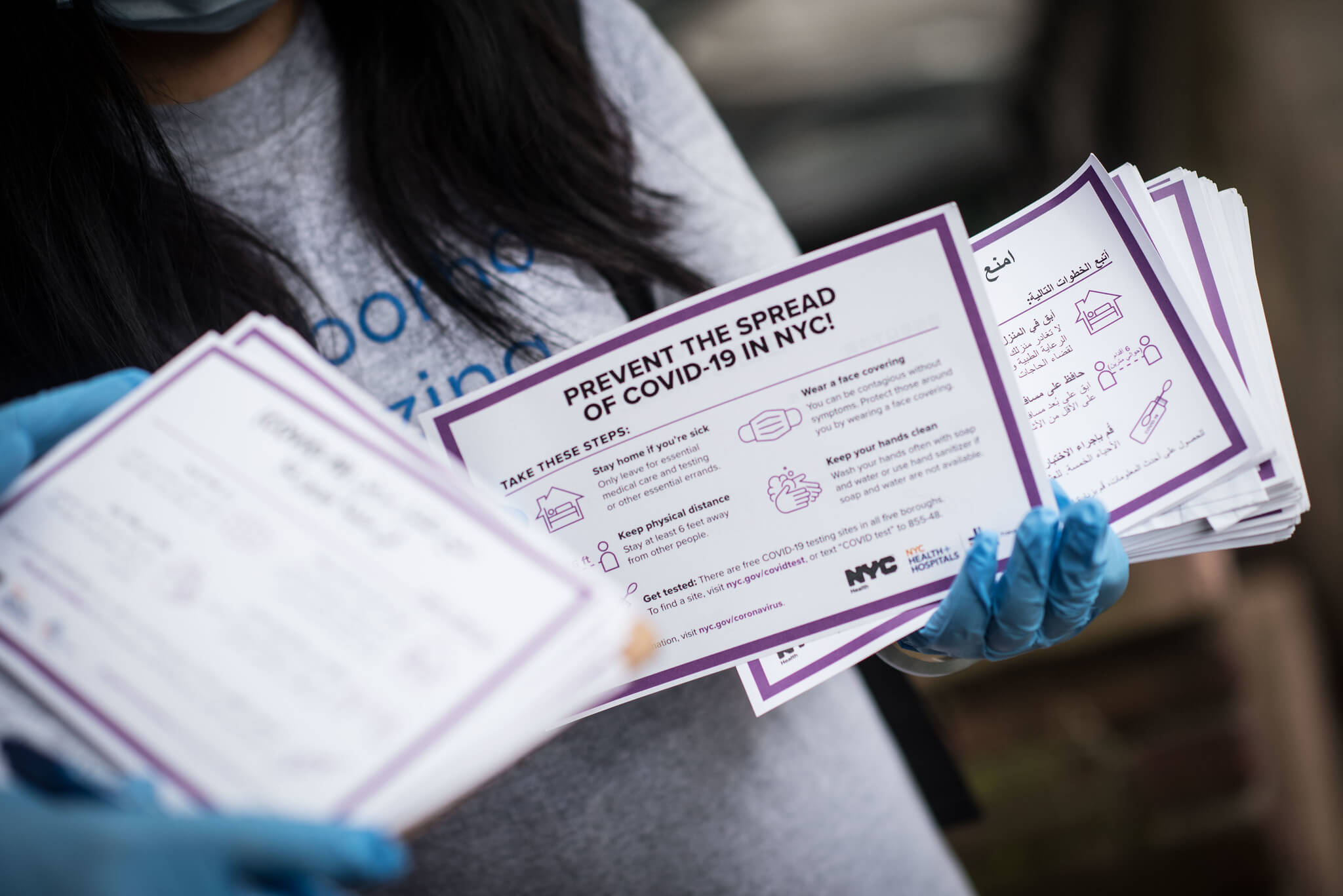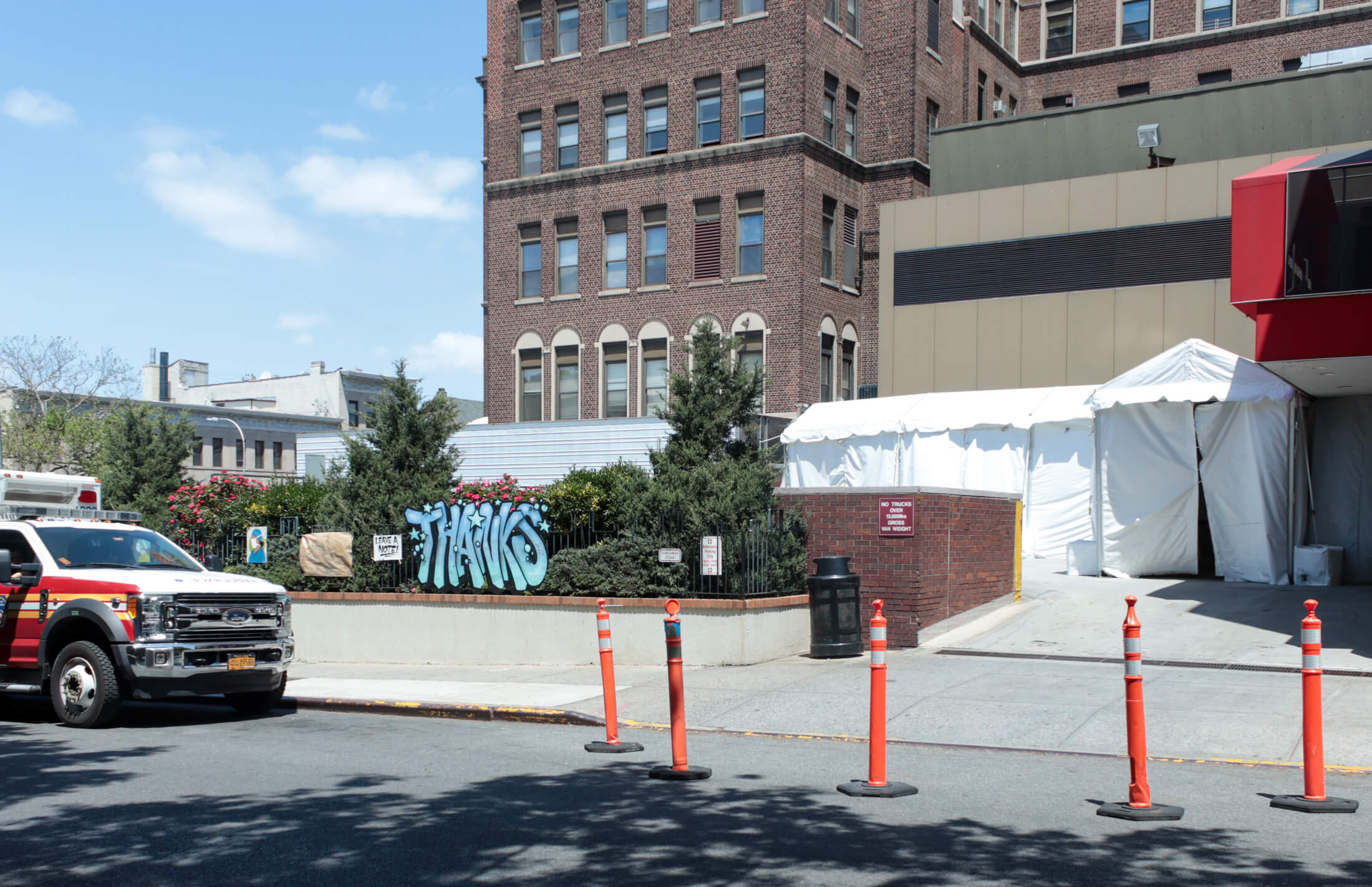In One Week, Brooklyn and Queens Had Two-Thirds of City's COVID Deaths
Though there’s some faint optimism as COVID-19 cases begin flattening out in New York City following a post-holiday surge, the virus continues to kill dozens of New Yorkers each day — particularly in Brooklyn and Queens.

A Mobile Covid-19 testing site in Ocean Hill. Photo by Michael Appleton/Mayoral Photography Office
Though there’s some faint optimism as COVID-19 cases begin flattening out in New York City following a post-holiday surge, the virus continues to kill dozens of New Yorkers each day — particularly in Brooklyn and Queens, which make up a disproportionate share of COVID deaths in the five boroughs.
Over a seven-day period between January 15 and January 21, approximately 352 New York City residents lost their lives to COVID-19, according to data from the New York governor’s office. But 238 of those fatalities occurred in Brooklyn and Queens, both of which were hard hit during the first wave of the pandemic last spring.
The two boroughs accounted for 67.6 percent of all city fatalities from COVID-19 during that seven-day period.
The higher number of deaths illustrate the post-holiday surge’s painful cost in two of the boroughs hardest hit by the pandemic since the virus was first officially detected in New York City on March 2, 2020.
Even so, the levels of death and infection across New York City, in the throes of the second wave of COVID-19, are not at the horrific highs experienced during the first wave in March and April of last year.

While the second wave increase has been more gradual, the first wave overwhelmed hospitals and morgues alike; in April 2020, the city lost more than 300 people each day to the virus, with daily COVID deaths at one point exceeding 800.
During his press conference Friday, Cuomo pointed out that the Bronx was leading the city in COVID-19 positivity rates, with 7.44 percent, but Queens and Brooklyn were not far behind (with Queens at 6.42 percent and Brooklyn at 6.03 percent).
The positivity rate, however, doesn’t tell the entire story about the spread of infection. While the Bronx saw 1,087 new COVID-19 cases on January 20, the state Health Department reported that Queens and Brooklyn led the entire city in new COVID-19 cases that same day — with 1,581 new infections reported in Brooklyn, and 1,455 in Queens.
Additional data from the city and state Health Department, as analyzed by the online local news site THE CITY, found that the highest concentration of new positive cases in recent days appeared to be coming from southern Queens and southern Brooklyn.
The southern Brooklyn surge appears to be affecting many of the same neighborhoods hardest hit by an outbreak in October and November; the 11235 ZIP code of Brighton Beach/Manhattan Beach and Sheepshead Bay had the highest seven-day positivity rate in the five boroughs at 17 percent. The surrounding ZIP codes of 11204 (Bensonhurst), 11230 (Midwood), 11214 (Bath Beach/Gravesend), 11223 (Gravesend/Homecrest), 11229 (Gerritsen Beach/Brighton Beach/Sheepshead Bay) and 11224 (Brighton Beach/Coney Island/Sea Gate) checked in with seven-day positivity rates of between 12 percent and 13 percent.
Five southern Queens communities are also getting slammed with COVID-19 cases: 11419 (South Richmond Hill) had the highest seven-day positivity rate in the borough at 16 percent, followed by 11421 (Woodhaven) and Ozone Park (11417) at 15 percent each, and 11420 (South Ozone Park) and 11435 (Briarwood/Jamaica) checking in at 13 percent each.

Moreover, the Queens and Brooklyn clusters have higher rates than in the Bronx, where cases appear to be more spread out across the borough. Seven Bronx ZIP codes — 10467 (Allerton), 10468 (Fordham), 10453 (Morris Heights), 10460 (Charlotte Gardens), 10462 (Parkchester), 10472 (Soundview) and 10474 (Hunts Point) each have 12 percent positivity, tied for the highest in the borough.
The New York Times reported Friday that 54 ZIP codes in New York City now have COVID-19 positivity rates above 10 percent, but another widespread shutdown similar to what was experienced last spring is unlikely as the hospital capacity rates have not yet met critical levels under state standards.
The city’s health department didn’t provide a definitive explanation for why Brooklyn and Queens saw so many COVID deaths in the past week. Agency officials noted that the death rate per capita among the boroughs has been rather low, and similar; between January 8 and January 14, the death rate per 100,000 people was 0.8 per 100,000 in Queens; 0.6 per 100,000 in the Bronx, Brooklyn and Staten Island; and 0.4 per 100,000 in Manhattan.
The data, however, is preliminary and subject to change, according to the city health department.
In a perfunctory statement, the agency urged New Yorkers to continue taking precautions to guard themselves against infection even as cases begin to flatten and vaccines are administered. There’s also concern about another uptick resulting from the arrival of a more infectious strain of COVID-19 that emerged in the United Kingdom; a handful of COVID-19 cases with this variant have been detected in New York City.
“The situation remains serious and everyone must be vigilant about the precautions that keep them and their fellow New Yorkers safe,” according to the statement. “Mask up, keep distance, stay home, wash hands, get tested and save a life. This guidance is as urgent now as it has ever been. New Yorkers must adhere to the precautions to keep themselves and their city safe.”
Editor’s note: A version of this story originally ran in amNY. Click here to see the original story.
Related Stories
- Help Out One of Brooklyn’s Many Mutual Aid Groups
- Doors to Remain Closed at Public Middle and High Schools Until 2021
- De Blasio Permits 23 Schools in Covid-19 Red Zones to Reopen on Thursday
Sign up for amNY’s COVID-19 newsletter to stay up to date on the latest coronavirus news throughout New York City. Email tips@brownstoner.com with further comments, questions or tips. Follow Brownstoner on Twitter and Instagram, and like us on Facebook.





What's Your Take? Leave a Comment